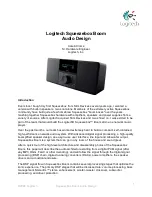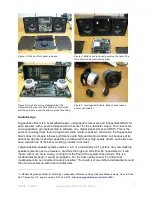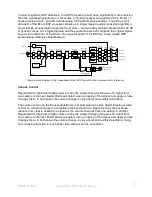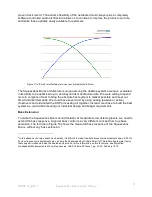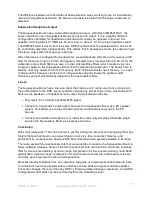
©2008 Logitech
Squeezebox Boom Audio Design
1
Logitech Squeezebox Boom
Audio Design
Caleb Crome
Sr. Hardware Engineer
Logitech, Inc.
Introduction
Ever since I bought my first Squeezebox from Slim Devices several years ago, I wanted a
version with built-in speakers. I was not alone. Members of the extremely active Squeezebox
community have built quite a few homebrew Squeezebox "boom boxes" over the years,
mashing together Squeezebox hardware with amplifiers, speakers and power supplies from a
variety of sources. After Logitech acquired Slim Devices and I was hired on, I was excited to be
part of the team that would build the Logitech® Squeezebox™ Boom all-in-one network music
player.
Over the past months, our team has worked extremely hard to build a compact, self-contained,
high-performance network audio system. With advanced digital signal processing, a high-quality
bi-amplified speaker design, an easy-to-use user interface, line input and subwoofer output,
Squeezebox Boom is a system that can go in any room of the house and sound great.
After a quick tour of the high-level architecture and disassembly photos of the Squeezebox
Boom, this paper will describe the audio architecture starting from a digital PCM signal (after
any MP3, OGG, FLAC or other decoding), and will follow the signal through the digital signal
processing (DSP) chain, digital-to-analog converters (DACs), power amplifiers, the speaker
drivers and acoustical enclosure.
The DSP signal flow in Squeezebox Boom contains several processing stages that optimize the
sonic experience. The primary DSP stages that will be discussed are: volume processing, bass
management, StereoXL™ stereo enhancement, woofer-tweeter crossover, subwoofer
processing, and driver protection.

